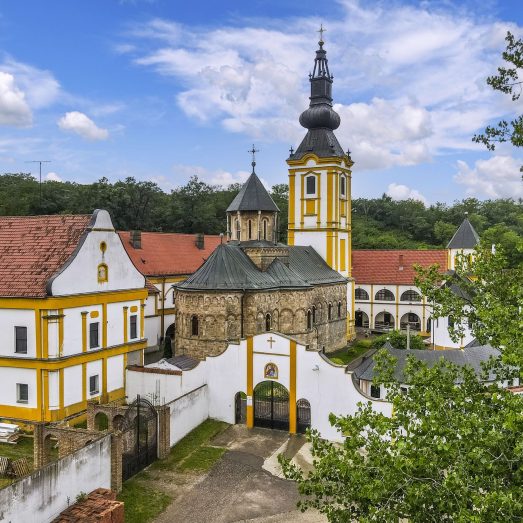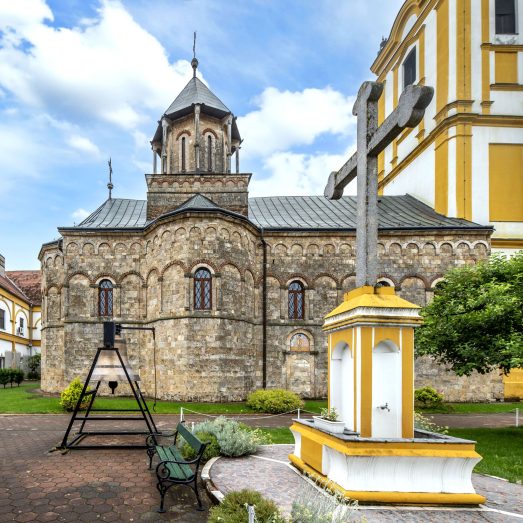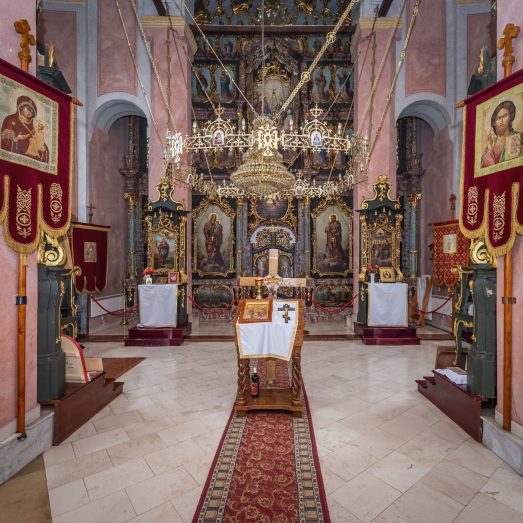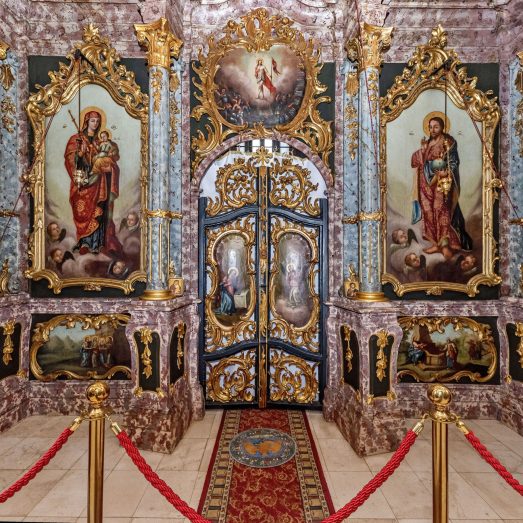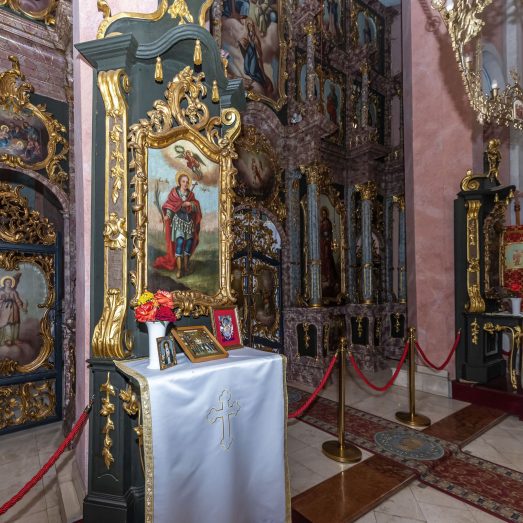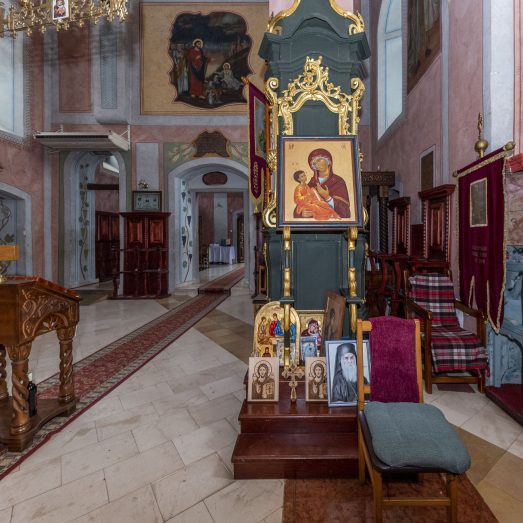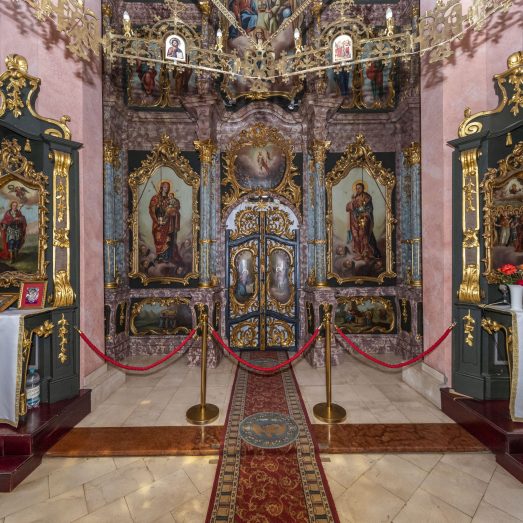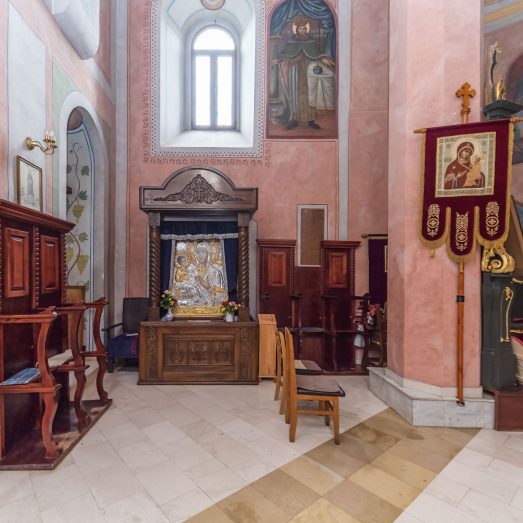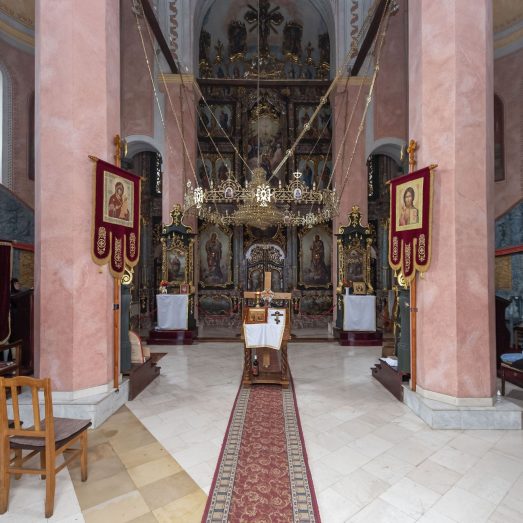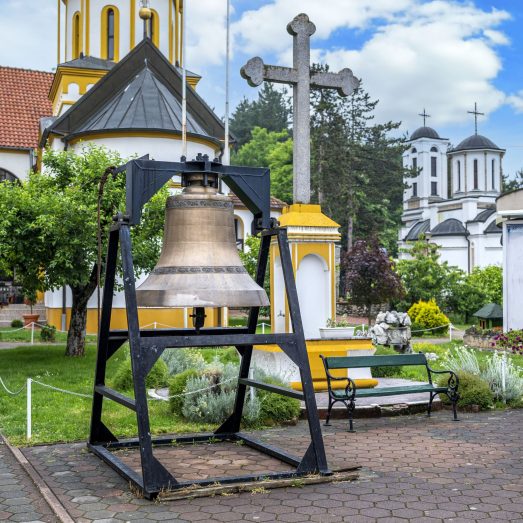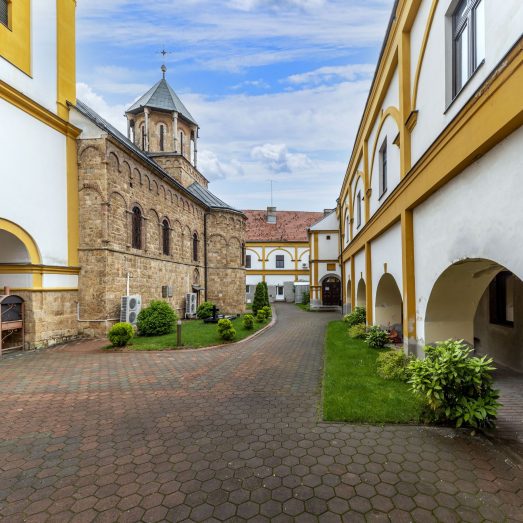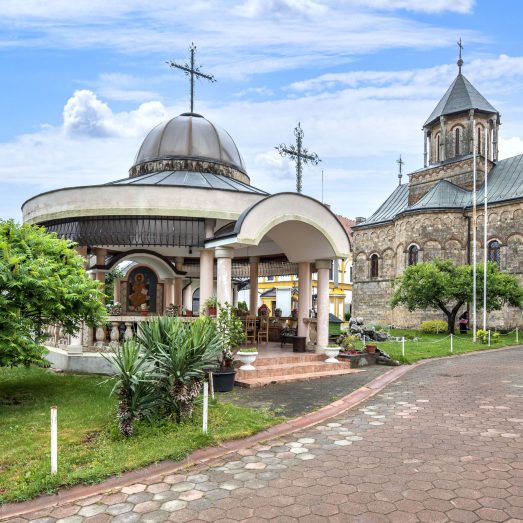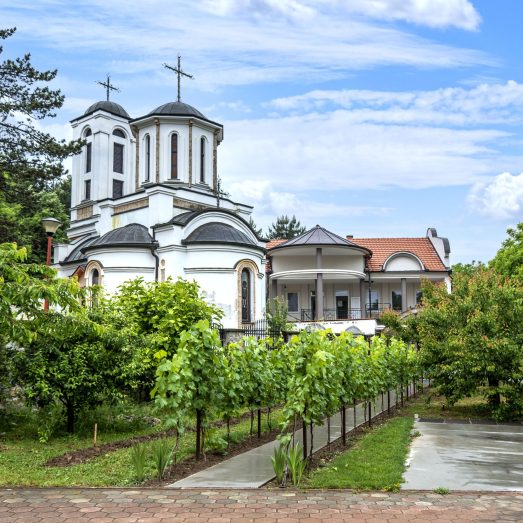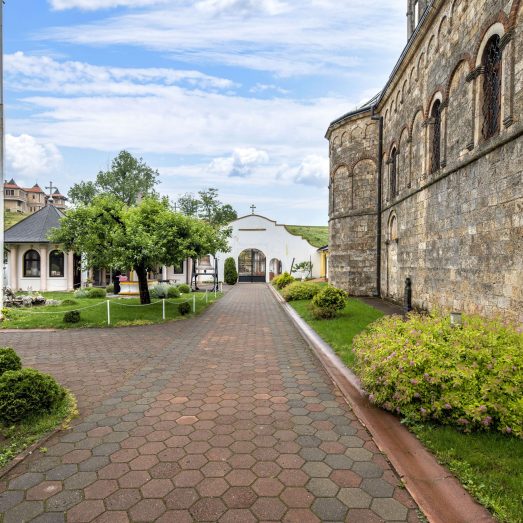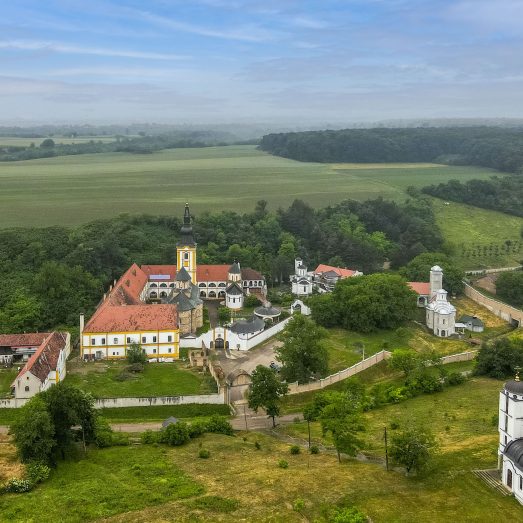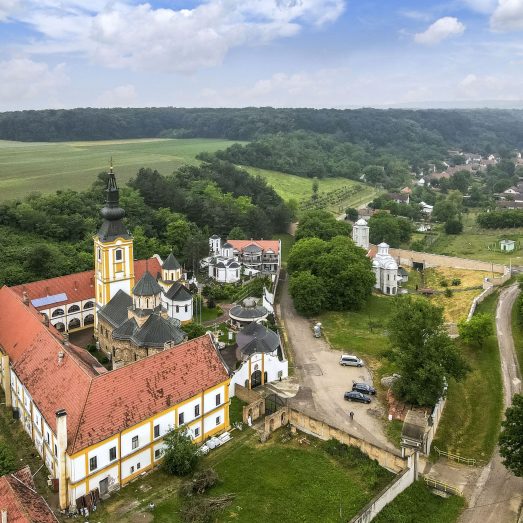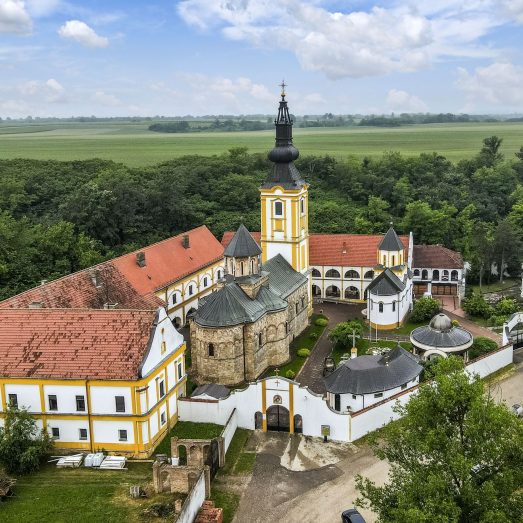The monastery church is dedicated to the Holy Archangels Michael and Gabriel (Sv. Arhanđeli Mihajlo i Gavrilo) (November 21 and July 26)
According to lore, the monastery was built in the 12th century by the Serbian nobleman Priba or Priva. The first historical data about the monastery can be found in an Ottoman document from the middle of the 16th century. At the beginning of the 17th century, in Privina Glava, Serbian Patriarch Pajsije found an illuminated psalter (today known as the “Munich Psalter”) and left a record testifying to the monastery. This psalter decorated with miniatures, created at the end of the 14th century, at one time belonged to the library of Despot Đurađ Branković, and it is assumed that it was brought to Srem by Despot Stefan the Blind (Stefan Slepi) (Branković), and then his son, Despot Jovan Branković, donated it to the monastery. Many beliefs that the construction or reconstruction of Privina Glava can be linked to the Branković family of Srem, Despot Jovan and his brother Bishop Maksim (15th century), were also based on the fact that during this period the Branković family ruled the Berkasovo fortress in the immediate vicinity of the monastery.
The fate of the “Munich Psalter”, which the Austrian officer took with him after the collapse of the Ottoman siege of Vienna in 1688, testifies to the looting of the monasteries in the wars of the Austrian Empire and the Ottoman Empire. Thanks to the contributions of the citizens of Šid, Šarengrad, Osijek and Vukovar, a new church was built in the middle of the 18th century, at the time of Metropolitan Pavle Nenadović, who consecrated it. At the same time, two-storey konaks were built, and a little later the bell tower. The monastery was damaged and robbed in Second World War. The treasury and library where many items and deeds of inestimable value were kept were destroyed. At the end of the 20th and the beginning of the 21st century, a part of the taverns, a courtyard and churches were built there: Church of the Shroud of the Virgin Mary (Pokrov Presvete Bogorodice), Church of St. George (Svetog Đorđa), Church of the Beakon of the Virgin Mary (Istočnik Presvete Bogorodice) and the Holy Cross (Časni krst) (on the hill).
The great value of the Church of St. Archangels Michael and Gabriel (Crkva Sv. Arhanđela Mihajla i Gavrila) is represented by an iconostasis whose carving, in the style of the late Baroque of the 18th century, is the work of the Novi Sad carver Arsenije Marković. There are various data on painters responsible for creating the iconostasis and wall painting. According to the book “Monument Heritage of Serbia”(”Spomeničko nasleđe Srbije”) based on the inscriptions in the song books, the painting of the iconostasis and the wall painting was done by Kuzman Kolarić, a painter of the Mannerist-Baroque style of the 18th century. According to the documentation of the Provincial Institute for the Protection of Cultural Monuments in Novi Sad, Andrej Šaltist is responsible for the current appearance of the iconostasis (according to the inscription on the icon of the Coronation of the Virgin (Krunisanje Bogorodice), and Kuzman Kolarić is responsible for wall painting (in the altar, naos, dome, narthex, singing counters). In the monastery, it can be heard that part of Kolarić’s paintings were later painted over by Jovan Nedeljković.
Particles of the relic of the Last Elders of Optina (monks of the Optina hermitage canonized as saints), St. Flavian (disciple of St. Cyprian, who, as his teacher, was executed by the Romans in the 3rd century) and Saint Sava are kept in the church. These relics and a copy of the Hilandar icon of Trojeručica are a strong incentive for believers to come to the monastery and participate in special and general liturgies, akathists, unction (the consecration of oil by which believers are anointed for healing), immersion and other manifestations of faith.
TOURIST INFORMATION: The appropriate way of dressing is implied (for women covered head, long skirt, long sleeves, and for men long trousers and shirt). Visitors are welcome, but they are expected not to bring food of animal origin or their pets. The group tour includes a story about the origin of the monastery and a tour of the church. You will receive all the necessary information when you announce your visit. A group visit to the Privina Glava Monastery should be announced 2-3 days in advance via phone number: +381 (0)22 739 110 (8.00–16.00).
